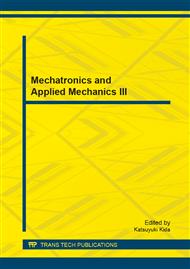p.191
p.196
p.200
p.204
p.208
p.212
p.218
p.227
p.231
Automatic Bone Drilling in Orthopedic Surgery Parameter Tuning of an Active Force Control
Abstract:
This paper deals with an active force control for automatic bone drilling. Orthopedic surgery often requires precise bone drilling for screws to be implanted. The hole quality in drilling process strongly depends on the applied thrust force (resistance force). In particular, a relatively large thrust force, applied in hand-drilling process, could cause a bone trauma (thermo necrosis or bone damage). To solve this problem we apply an active force control in order to achieve constant and safety drilling thrust force. Moreover, we propose an algorithm for parameter tuning of the considered control system.
Info:
Periodical:
Pages:
208-211
Citation:
Online since:
February 2014
Price:
Сopyright:
© 2014 Trans Tech Publications Ltd. All Rights Reserved
Share:
Citation:


